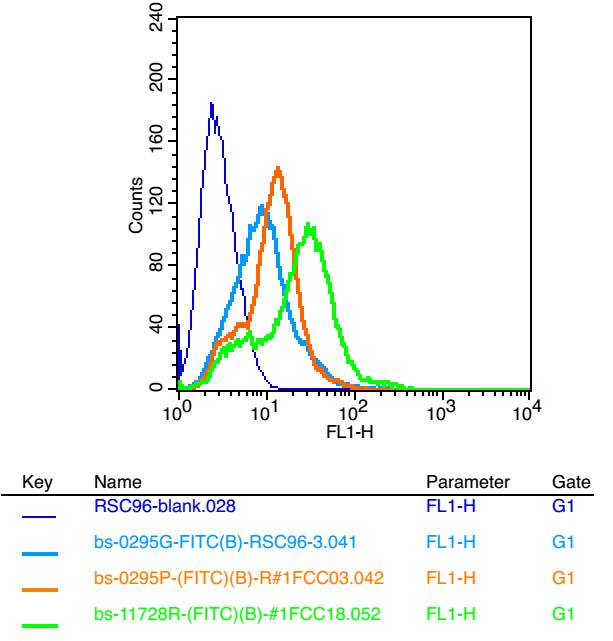
Rabbit Anti-KCNQ2 antibody
BFNC; BFNS1; EBN 1; EBN; EBN1; EIEE7; ENB 1; ENB1; HNSPC; KCNA 11; KCNA11; KCNQ 2; Kcnq2; KCNQ2_HUMAN; KQT like 2; KQT-like 2; KV7.2; KVEBN 1; KVEBN1; KvLQT 2; KvLQT2; Neuroblastoma specific potassium channel alpha subunit KvLQT2; Neuroblastoma specific p
View History [Clear]
Details
Product Name KCNQ2 Chinese Name 钾离子Channel protein家族KCNQ2抗体 Alias BFNC; BFNS1; EBN 1; EBN; EBN1; EIEE7; ENB 1; ENB1; HNSPC; KCNA 11; KCNA11; KCNQ 2; Kcnq2; KCNQ2_HUMAN; KQT like 2; KQT-like 2; KV7.2; KVEBN 1; KVEBN1; KvLQT 2; KvLQT2; Neuroblastoma specific potassium channel alpha subunit KvLQT2; Neuroblastoma specific potassium channel protein; Neuroblastoma specific potassium channel subunit alpha; Neuroblastoma specific potassium channel subunit alpha KvLQT2; Neuroblastoma-specific potassium channel subunit alpha KvLQT2; Potassium voltage gated channel KQT like protein 2; Potassium voltage gated channel KQT like subfamily member 2; Potassium voltage gated channel subfamily KQT member 2; Potassium voltage-gated channel subfamily KQT member 2; Voltage gated potassium channel subunit Kv7.2; Voltage-gated potassium channel subunit Kv7.2. Research Area Neurobiology Channel protein The cell membrane受体 Immunogen Species Rabbit Clonality Polyclonal React Species Rat, (predicted: Human, Mouse, Dog, Cow, Horse, Sheep, ) Applications ELISA=1:5000-10000 IHC-P=1:100-500 IHC-F=1:100-500 Flow-Cyt=3μg/Test ICC=1:100-500 IF=1:100-500 (Paraffin sections need antigen repair)
not yet tested in other applications.
optimal dilutions/concentrations should be determined by the end user.Theoretical molecular weight 96kDa Cellular localization The cell membrane Form Liquid Concentration 1mg/ml immunogen KLH conjugated synthetic peptide derived from human KCNQ2: 91-150/872 <Extracellular> Lsotype IgG Purification affinity purified by Protein A Buffer Solution 0.01M TBS(pH7.4) with 1% BSA, 0.03% Proclin300 and 50% Glycerol. Storage Shipped at 4℃. Store at -20 °C for one year. Avoid repeated freeze/thaw cycles. Attention This product as supplied is intended for research use only, not for use in human, therapeutic or diagnostic applications. PubMed PubMed Product Detail Epilepsy affects about 0.5% of the world’s population and has a large genetic component. Epilepsy results from an electrical hyperexcitability in the central nervous system. Potassium channels are important regulators of electrical signaling, determining the firing properties and responsiveness of a variety of neurons. Benign familial neonatal convulsions (BFNC), an autosomal dominant epilepsy of infancy, has been shown to be caused by mutations in the KCNQ2 or the KCNQ3 potassium channel genes. KCNQ2 and KCNQ3 are voltage-gated potassium channel proteins with six putative transmembrane domains. Both proteins display a broad distribution within the brain, with expression patterns that largely overlap.
Function:
Probably important in the regulation of neuronal excitability. Associates with KCNQ3 to form a potassium channel with essentially identical properties to the channel underlying the native M-current, a slowly activating and deactivating potassium conductance which plays a critical role in determining the subthreshold electrical excitability of neurons as well as the responsiveness to synaptic inputs. KCNQ2/KCNQ3 current is blocked by linopirdine and XE991, and activated by the anticonvulsant retigabine. Muscarinic agonist oxotremorine-M strongly suppress KCNQ2/KCNQ3 current in cells in which cloned KCNQ2/KCNQ3 channels were coexpressed with M1 muscarinic receptors.
Subunit:
Heteromultimer with KCNQ3. May associate with KCNE2.
Subcellular Location:
Membrane; Multi-pass membrane protein.
Tissue Specificity:
In adult and fetal brain. Highly expressed in areas containing neuronal cell bodies, low in spinal chord and corpus callosum. Isoform 2 is preferentially expressed in differentiated neurons. Isoform 6 is prominent in fetal brain, undifferentiated neuroblastoma cells and brain tumors.
Post-translational modifications:
In Xenopus oocytes KCNQ2/KCNQ3 heteromeric current can be increased by intracellular cyclic AMP, an effect that depends on phosphorylation of Ser-52 in the N-terminus region.
DISEASE:
Defects in KCNQ2 are the cause of benign familial neonatal seizures type 1 (BFNS1) [MIM:121200]. A disorder characterized by clusters of seizures occurring in the first days of life. Most patients have spontaneous remission by 12 months of age and show normal psychomotor development. Some rare cases manifest an atypical severe phenotype associated with epileptic encephalopathy and psychomotor retardation. The disorder is distinguished from benign familial infantile seizures by an earlier age at onset. In some patients, neonatal convulsions are followed later in life by myokymia, a benign condition characterized by spontaneous involuntary contractions of skeletal muscles fiber groups that can be observed as vermiform movement of the overlying skin. Electromyography typically shows continuous motor unit activity with spontaneous oligo- and multiplet-discharges of high intraburst frequency (myokymic discharges). Some patients may have isolated myokymia. Defects in KCNQ2 are the cause of epileptic encephalopathy early infantile type 7 (EIEE7) [MIM:613720]. EIEE7 is an autosomal dominant seizure disorder characterized by infantile onset of refractory seizures with resultant delayed neurologic development and persistent neurologic abnormalities.
Similarity:
Belongs to the potassium channel family. KQT (TC 1.A.1.15) subfamily. Kv7.2/KCNQ2 sub-subfamily.
SWISS:
O43526
Gene ID:
3785
Database links:Entrez Gene: 3785 Human
Entrez Gene: 16536 Mouse
Omim: 602235 Human
SwissProt: O43526 Human
SwissProt: Q9Z351 Mouse
Unigene: 161851 Human
Unigene: 40615 Mouse
Unigene: 440175 Mouse
Unigene: 33317 Rat
Product Picture
Bought notes(bought amounts latest0)
No one bought this product
User Comment(Total0User Comment Num)
- No comment



 +86 571 56623320
+86 571 56623320
 +86 18668110335
+86 18668110335

